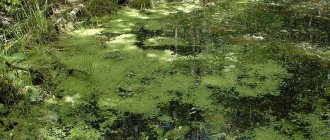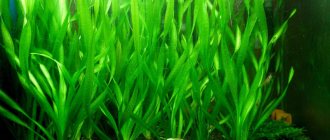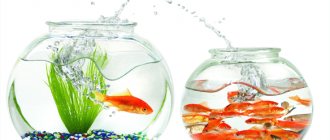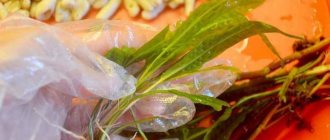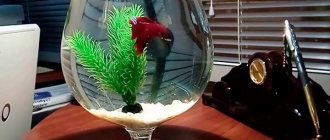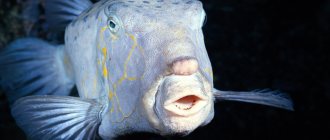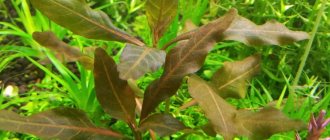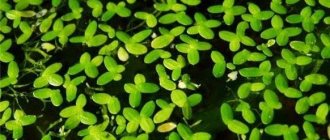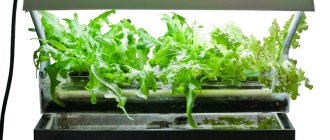Proper cultivation of aquarium plants begins when they are transported from the pet store. The purchased plant must be in a package that, in addition to water, also provides sufficient moisture and also protects it from possible damage. In winter, additional protection from the cold is required, such as a travel refrigerator. Before planting, we must become familiar with the requirements of a given variety: light and heat requirements, the size at which it can grow (especially considering the height), whether they prefer to grow individually or in groups and where they will look best (back, middle or , possibly the front of the aquarium). It's also worth planning your aquarium before taking into account the shape, color and texture of individual plants - light green plants look good in a dark green or red environment, plants with round leaves should be next to feathery plants, etc.
Rules for planting aquatic plants
- after transporting the plants to the house, they should be placed in water at the same temperature as in the aquarium, with the addition of potassium permanganate (10% solution) for disinfection,
- The next step is to rinse the plants thoroughly,
- purchased plants often have a weight that prevents them from moving into the transport container, the roots can be additionally wrapped in cotton wool - both the weight and the cotton wool must be removed before planting,
- then clean the leaves: remove damaged, rotting, withered parts and dead, brown or black roots,
- remove leaves at the base of the stems (in the part that we will plant in the ground), shorten very long roots (to a length of about 3 cm) - all these operations are performed with sharp scissors (made of stainless steel)
- we must also remove snail eggs or snails if we see them,
- plants can be planted before or after the aquarium is partially filled with water, but it is better to do this when the tank is partially flooded,
- we plant tall plants at the back of the tank, low in front, and always start low,
- if we plant plants in a group, leave space between individual stems (it is better to know which leaf covers the plant),
- plants with a highly developed root system are carefully covered with root substrate,
- we plant the root in a previously dug hole in the ground, covering them with unpainted leaf root,
- we cover up to two thirds of their height,
- we plant the rhizomes under a gentle bend and do not cover them completely,
- poorly rooted stem plants are placed in the substrate to a depth of up to two knots; they can be additionally supported with small stones,
- floating plants should occupy 10-20% of the water surface,
- we plant plants so that the light reaches all their leaves - even the lowest ones,
- after placing the plant in the hole, its roots should not be bent or protrude - to do this, carefully place the plant in the prepared hole, a little deeper than it should be, then slowly pull it into the desired position,
- we carefully cover the roots with soil, being careful not to damage or compress the roots of the plant stem,
- too dense planting is not beneficial - the fish must have room for free swimming,
- After planting, wait up to two weeks to see if the plants are accepted. Then launch the fish.
1.1. Proper planting of plants in vitro - video tutorial
Tips for growing plants
It is known that the basic information for the proper cultivation of aquarium plants in an aquarium is provided to us by their requirements. Therefore, we must know on which continent, in which climate zone, in which waters and in which group (water, mud, swimming). The appearance range is an indication of the length of daylight that is required. It was assumed that for plants from the equator this is 12 hours and increases with latitude. The climate zone is an indicator of the corresponding temperature. We also remember that our plants do not protrude above the groundwater level (they lose their underwater leaves) and systematically remove their dead parts.
Under artificial conditions, plants rarely bloom (generative propagation), so we propagate them vegetatively (asexually). This involves the creation of a new plant (offspring) organism from part of the parent (parent) organism. We can do this in various ways: by dividing the rhizome, by using runners, by growing shoots, tubers, suckers, attached flower shoots, pruning (cutting stems), etc. Plants take this route due to their regenerative abilities.
Beautiful and healthy aquarium plants require proper care, which depends on the following parameters:
- optimal lighting,
- correct water temperature,
- natural movement of water,
- correct chemical composition of water,
- suitable substrate,
- complex and rational fertilization,
- regular care
- Adequate filtration for clear and clean water.
Filling the center and back area
How to properly plant vegetation in the background and center of the tank? For these purposes, stem species are used, which are best planted in a group. After all, the group has an attractive appearance. Echinodorus and cryptocorynes are used to fill the center. They actively spread throughout the reservoir.
Planted flowers and shady vegetation are grouped by shade, size and shape. At the same time, you need to carefully use algae and other representatives of the flora, which have a rich red tint, to decorate the tank. After all, fish do not perceive this shade well.
3. Lighting for plants
In the case of plants, light is necessary for the processes of photosynthesis - the assimilation (conversion) taken from the environment of carbon dioxide and water into oxygen and carbohydrates, which plants need for the growth of their cells. Light is the energy source for these processes - so photosynthesis only occurs during the day or when the lights are on. During the night, plants use some of their oxygen to respire (they give off carbon dioxide), but with plant animal balance, the balance is always positive on the side of oxygen produced and carbon dioxide taken in.
When it comes to growing plants, it is no secret that for proper photosynthesis, it is best to use wavelengths of 400-450 nm and 650-700 nm, but wavelengths around 550 nm are useless. The graph above shows the dependence of the process of photosynthesis on the wavelength of light.
The amount of such light when using fluorescent lamps should be about 0.5 W / l, however, excess light is less harmful to plants than its insufficiency (it is its intensity, not the time of illumination).
The optimal lighting time for plants is in the range of 10-12 hours/day, with a required minimum of 8 hours/day. One thing to remember is to avoid what is called light shock in the case of fish, or a sudden change from dark to bright light.
4. Correct water temperature
For all tropical plants, the optimal water temperature is 20-26ºC. Water temperatures that are too low result in slow plant growth, stunted growth and poor health. Too high a water temperature leads to a significant increase in their aging. To ensure that our plants have the right temperature, it is best to use heaters with a thermostat, which should work around the clock. Sharp fluctuations in water temperature have a particularly negative effect on the development of delicate plant species.
An important parameter is also the uniform heating of water - it is necessary that at each point of the aqua there is the same temperature. To do this we must install a heater near the filter outlet. A good solution is to additionally use heating cables under or in the ground (necessarily with a thermostat). Warming the earth 1-2ºC above the water temperature causes natural convective movement of water - warmer water slowly rises up, cooler water moves down. These movements cause constant circulation of water in the aquarium, which causes additional positive effects:
- nutrients in water are transported to the ground,
- the final metabolic products of beneficial bacteria living in the substrate are removed from the substrate,
- Plant roots are constantly provided with fresh water and minerals necessary for rapid and stable plant growth.
Adding Nutrients
For the normal growth of greenery in an aquarium, it is important to create a certain nutrient medium.
In particular, microelements such as manganese, zinc, boron, iron and other substances are necessary for the full development of vegetation. But they should not be in large quantities, otherwise the effect will be exactly the opposite.
Phosphates, nitrates and sulfates are just as necessary as trace elements. As a rule, they get into water naturally, i.e. you don't have to enter them separately. In particular, these substances are contained in the excrement of aquariums, so if there are enough of them, the level of nitrates will be at the optimal level.
By the appearance of plants, you can determine which substance they are lacking. If the leaves become brittle or the tips of the leaves turn yellow, this indicates a lack of iron. Too rapid yellowing of foliage indicates a lack of sulfur or nitrogen. The appearance of yellowish spots on the foliage, on the contrary, indicates an excess of substances such as phosphorus, manganese or iron.
6. Correct water chemistry
The chemical composition of water is controlled by available tests to measure individual compounds and parameters: pH level, water hardness (total, carbonate), level of ammonia, nitrites, nitrates, etc. We can choose:
- strip tests - the measurement consists of immersing a strip in water, waiting a certain time and comparing the color result with the existing pattern,
- drop tests - add a few drops of the test reagent to a water sample, mix and compare the color of the resulting solution with an available color chart.
If we observe undesirable deviations in the results obtained, we must correct the condition of the water in the aquarium, if possible, using “natural” means (for example, too many nitrates - we do a partial water change). Only as a last resort we use in aquariums, aquarium preparations available in pet stores.
The situation looks completely different when you start the aquarium from the very beginning - in this case we never use any drugs or conditioners. The water in the aquarium must be chemically mature and stabilized. It takes about 4-6 weeks for this. During this time, beneficial bacteria multiply, the pH and hardness of the water are stabilized. Only after the nitrogen cycle has closed (tests for ammonia and nitrite should not indicate any value) can we speak of a mature, balanced reservoir.
Maturing the aquarium
During the first month, the aquarium is not touched. Prohibited:
- take away;
- change water;
- siphon the bottom.
This is the time when colonies of bacteria form in water and actively multiply, forming a biological environment. If you clean, siphon, change the water, microorganisms are removed. The process is interrupted. Without interfering with the life of microorganisms, the aquarium is allowed to mature.
Water is filled with bacteria on its own, but its acquisition of biobalance can be accelerated. They use Tera Safe Start tablets, the Tetra line of drugs, zeolite and other analogues.
They affect water in different ways:
- promote the proliferation of beneficial microorganisms;
- contain a concentrate of bacteria;
- neutralize poisons.
The drugs are used separately and together.
The right substrate
The use of a suitable substrate is important from the point of view of the plants themselves, but also from the point of view of the “continuity” of the nitrogen cycle (nitrifying bacteria develop not only in the filter - its contribution, but also in the substrate and its surface).
An important parameter of our substrate should be the fact that it does not change the pH and hardness of the water, that is, it does not contain calcium compounds that are easily soluble in water and therefore increase its pH and hardness. The easiest way to test a substrate is the vinegar test - pour a few drops of vinegar onto a sample of the substrate. When it foams, it contains calcium compounds and is not suitable for a planted aquarium.
Another important parameter is the granulation of the substrate, which will properly support the plant roots, will not be too compact, so that oxygen and nutrients can reach them and will promote the development of beneficial nitrifying bacteria. In connection with the above, the optimal diameter of the crushed grain is 1-3 mm.
It should be remembered that using only gravel or sand is unfavorable for most plants, especially dirt and plants with heavily developed root systems. This is a sterile material that does not contain or release nutrients, macro and microelements into the water. Therefore, it is necessary to use appropriate substrates enriched with mineral compounds and, above all, iron. You can also enrich gravel balls, laterite, etc. by yourself.
We never make the foundation flat. A thinner layer should be on the front of the tank, a thicker one at the back. The difference in levels should be 5-10 cm.
7.1. Fixing plants for decorative elements using moss as an example - video tutorial
Priming
It is very important to choose the right soil for your aquarium. For plants with a root system that must be planted in the ground, there are several basic requirements. The soil should be fine (sand or fraction 0.1 - 0.5 cm) and light. The roots should be able to grow freely in the gravel.
The soil layer depends on the plants. On average 3 - 5 cm. Large plants, such as aponogeton, large cryptocorynes, echinodorus, need a layer of 8-10 cm.
You can determine the required amount using an aquarium calculator.
Complex and rational fertilizer, CO 2 fertilizer
Depending on the type and type of plant, nutrient absorption occurs only through leaves or roots or together through leaves and roots. Therefore, there are different types/forms of fertilizers on the market: in liquid (better absorbed by leaves) and in tablets, capsules, balls or sticks (specially adapted for placement in the substrate).
Minerals necessary for the proper development of plants can be divided into macroelements - components collected by plants in large quantities that perform construction functions that are of primary importance in plant nutrition, and microelements (microelements) - collected by plants in small quantities that perform physiological functions. Both groups are extremely important for the healthy growth of aquarium plants.
Macronutrients include:
- nitrogen (N) - absorbed by plants in the form of nitrates (NO 3) or ammonium (NH 4 +), part of all amino acids - the main building blocks of proteins, nucleic acids, chlorophyll and plant hormones,
- phosphorus (P) - absorbed by plants in the form of phosphates (PO 4 3-), necessary for energy production in cells,
- sulfur (S) - necessary for the production of chlorophyll, photosynthesis and respiration, the main building blocks of proteins,
- potassium (K) - activator of enzymes necessary for photosynthesis, osmoregulation processes of plant cells and tissues,
- calcium (Ca) - is critical for the process of cell division, the formation of cell walls and membranes, the absorption and transformation of nitrates and carbohydrate metabolism in the plant,
- Magnesium (Mg) is the main component of chlorophyll (the colorant for green leaves), key for photosynthesis, also responsible for the activation of enzymes, the formation of DNA and RNA proteins, carbohydrates, fats, vitamins, phosphorus transport, carbohydrate metabolism and energy reactions.
Nitrogen fertilization and phosphorus supplementation are not required in a fish tank - the water contains large amounts of compounds due to inedible food and organic waste that are broken down into digestible forms by nitrifying bacteria. The case will be different in the case of an aquarium with a significant predominance of plants over fish/aquatic animals or in typically planted aquariums.
In the case of potassium, this element must be supplemented with appropriate fertilizers from the very beginning, after setting up the aquarium and after each partial water change.
Micronutrients include:
- iron (Fe) - necessary for the formation of enzymes that promote the synthesis of chlorophyll,
- copper (Cu) - regulates the transformation of nitrogen compounds, affects the formation of chlorophyll and the construction of cell walls,
- manganese (Mn) - is responsible for the intensity of photosynthesis and is involved in the transformation of nitrogenous compounds and carbohydrates,
- zinc (Zn) - it plays a role in the synthesis of growth hormones, affects protein metabolism, vitamin synthesis and regulates the conversion of phosphorus in the plant,
- boron (b) - participates in carbohydrate metabolism,
- molybdenum (Mo) is an enzymatic component that is involved in nitrogen metabolism, affects the conversion of phosphorus and the synthesis of chlorophyll and vitamins,
- vanadium (V) - ensures uninterrupted operation of enzymes.
In the case of aquarium plants, we only use fertilizers intended for this purpose. We never use fertilizers in pots - they are poisonous to fish and other aquatic animals.
8.1. CO 2 fertilizer
The most important nutrient for plants is carbon dioxide - CO 2. Only this allows plants to obtain carbon (C) to form organic compounds necessary for their growth through the process of photosynthesis (using CO 2 and water, plants produce complex sugar molecules). In addition, carbon dioxide is an important stabilizer of carbonate hardness and the corresponding pH value in our aquarium.
The lack of carbon dioxide in water is manifested in the slow growth of plants, their unattractive appearance and pale color. This is especially obvious among plants characterized by rapid growth (eg water cabbage, Egyptian water lily) because the faster a plant grows, the more carbon dioxide it needs.
The mere presence of carbon dioxide in the aquarium may not be enough if we do not ensure its optimal solubility in water. What does not dissolve in it reaches its surface in the form of bubbles and is a loss to the plants.
To prevent this, special CO 2 reactors are used, that is, a connected bottle with compressed carbon dioxide for a diffuser, which is located in the aquarium; homemade homemade or liquid charcoal Carbon dioxide fertilization must be strictly controlled as its incorrect concentration can lead to tragic consequences for fish and aquarium animals.
At night, fertilization with carbon dioxide should be avoided, because in the dark there are no photosynthesis processes - plants breathe oxygen produced during the day and release carbon dioxide into the water. It is then easy to exceed its concentration and thus reduce the pH (more carbon dioxide in the water - more acidification of the water), and each change in pH by 1 degree leads to a tenfold change in the concentration of ions (logarithmic function).
The optimal amount of CO 2 in 1 liter of water is 10-30 mg.
Regular plant care
Regular plant care comes down to:
- regular removal of dead plant parts,
- regular removal of algae, cleaning plants from algae,
- immediate transfer of plants dug up by fish into the soil,
- systematically trim the plants using appropriate stainless steel tools (never with fingers), removing floating leaves,
- systematic planting/thinning of dense bushes,
- removing/separating runners,
- regular checking of water parameters and levels of minerals (nitrates, iron, carbon dioxide, etc.),
- regular fertilization of aquarium plants,
- systematic cleaning of the base, glass from the inside,
- systematic replacement of lighting - after about 9-12 months, the efficiency of the fluorescent lamps used can be reduced to 50%.
9.1. Trimming plants in an aquarium - video guide
Proper water filtration
For the proper development of plants, clear and clean water is needed, free from suspended particles that fall on their leaves, clog the pores into which nutrients enter, and therefore limit the processes of photosynthesis. This condition will ensure that in our aquarium the filtration of the appropriate container for the filter material, both mechanical (removal of suspended particles) and biological (on which beneficial bacteria will develop, decompose harmful substances).
The filter should run 24 hours a day, every day, and within 50 minutes, 50-80% of the aquarium water should flow through it. Then such a filter effectively performs its function.
It is also important to correctly adjust the water outlet from the filter - so that the water surface moves, but does not create turbulence (without splashing). Improper alignment of this outlet can result in excess carbon dioxide being removed from the aquarium.
Optional equipment
It all depends on the specific situation. If the temperature in the room in winter is kept within +15 degrees Celsius, then an additional heater is necessary. If the temperature is above +20 degrees, then this can be neglected.
A filtration system is mandatory. In addition, many filters are already sold complete with the aquarium itself.
There are several important points here:
- The filter used should not create strong flows of water, otherwise the carbon dioxide level will be low.
- The filter must be powerful enough to remove contaminants in the water.
- To ensure uniform distribution of useful substances throughout the aquarium, it is important to create a water flow, for which the filter is responsible. Although if there are a lot of fish, then these flows are created naturally during their movement.
